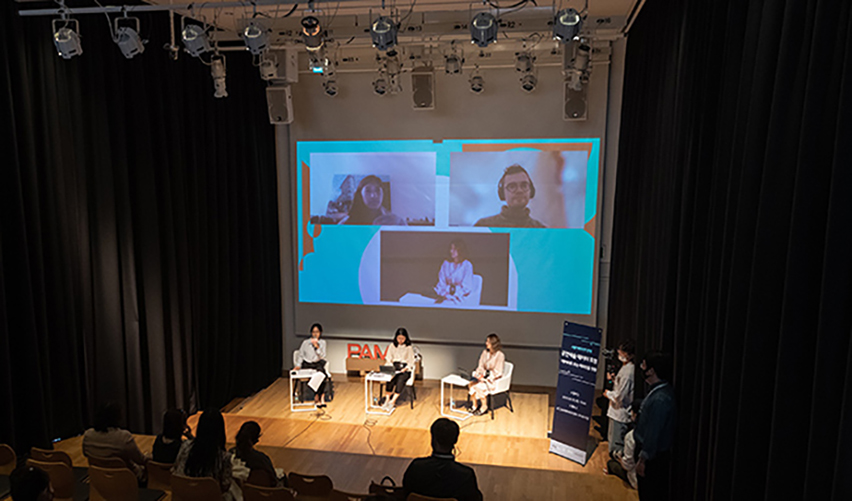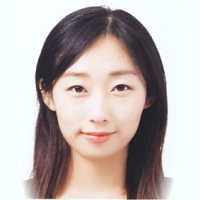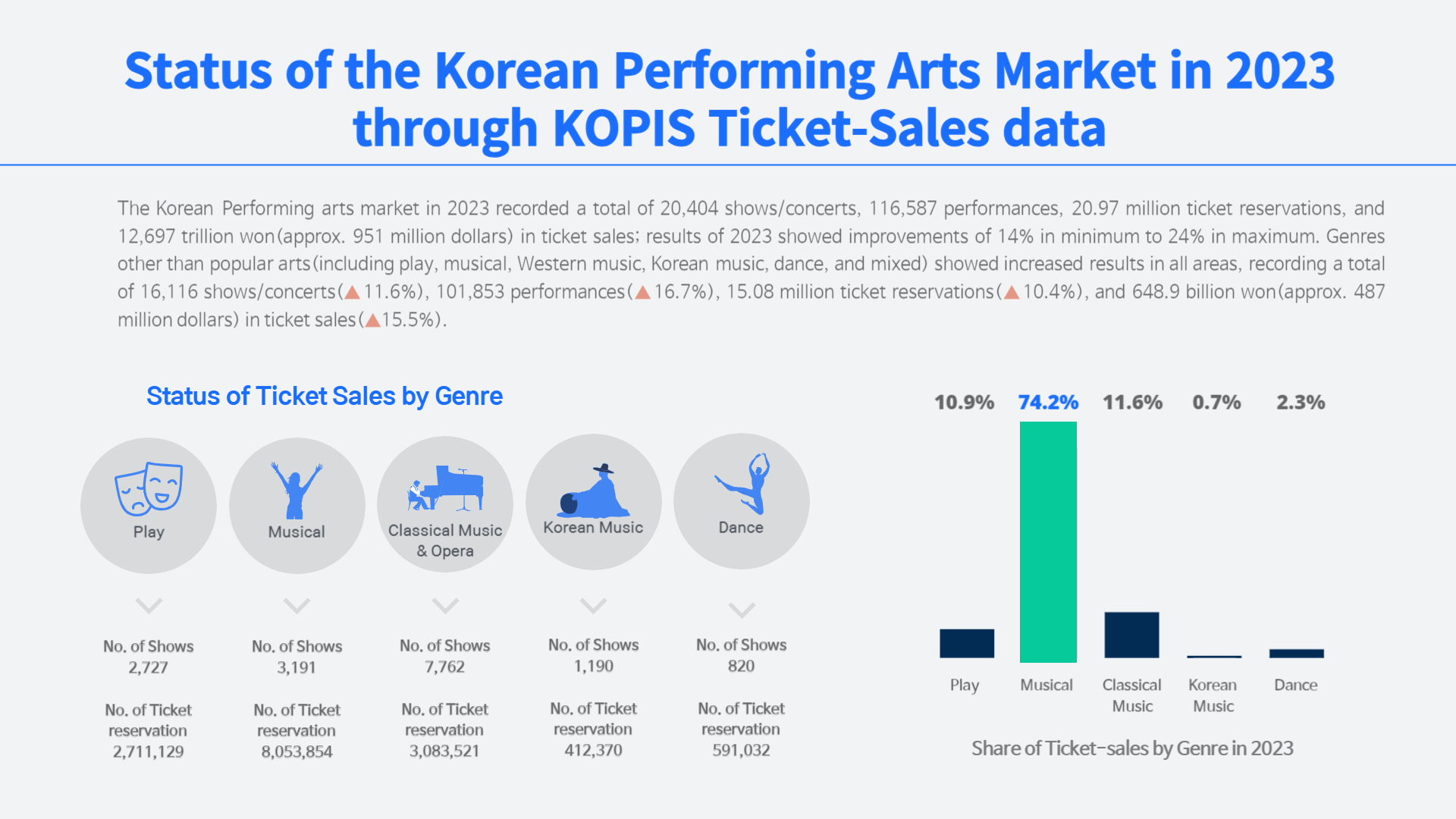The Need for a Data “Sharing” Portal for the Performing Arts
Dae-sung Yoon(Monthly Magazine DANCE FORUM Editor)
All that glitters is not gold. For years, data analysis has come under the limelight as a gold vein with infinite uses, as an enormous amount of information became available on the web. For instance, Google predicted the election of Donald Trump as the president of the United States in 2016 via Big Data. There were more people who googled “Trump Hillary” than “Hillary Trump” in relation to the presidential election—the candidates’ names subconsciously typed first into the private search box on the screen prior to the election showed that more people supported Donald Trump. An even more popular story about data analysis is the so-called Netflix myth. Netflix, the forefather of the original content craze, hit the jackpot with its first original series “House of Cards” (2013), which was created using Big Data analytics to determine the director, actor, genre, and even the story that were most preferred by the viewers.
It is, however, more difficult than you may think to organize hazy data into clear and meaningful information. Everyone talks about success stories, but failures go relatively unnoticed. Yet, for a gold vein to be considered profitable, a mere five grams of gold may be obtained from a ton of soil. It may not be a jackpot, but it would be an indicator to help one navigate the waters of choices to make the right decisions. Therefore, the “Performing Arts Data Forum“ hosted by the Korea Arts Management Service is a gold vein exploration project that provides a platform to discuss the way to utilize what glitters (data). Currently Korean institutions are only in the exploratory stage of utilizing international exchange data. Launched this year, the Data Forum made its introduction as an event of the K-Musical International Market in June, and the second forum was held at the JCC Creative Center Auditorium in Hyehwa-dong, Seoul, on September 29 in connection with the Performing Arts Market in Seoul.

Four Ways to Collect and Utilize Data on the Korean Performing Arts Entering Overseas Markets
As this Data Forum was held in connection with the Performing Arts Market in Seoul, Asia's largest performing arts market, it focused on the international exchange of performing arts with the theme of the International Mobility Data: What do you want to see?” It is difficult to say that South Korea has reached the stage where data on international exchanges of the performing arts sector are systematically collected. Therefore, this forum had the nature of a casual luncheon to check the ways to collect and use the information through the analysis of current conditions in Korea and study cases from overseas. It was a bit brief to compare it to a dinner, but a bit heavy for a breakfast.
The menu for this forum consisted of four courses, alternating between Korean and non-Korean dishes. First, In-hye Jeong, the head of the Performing Arts Data Team at the Korea Arts Management Service, presented on the “Center Stage Korea: Tracking oversea expansions of Korean performing Arts.” Then, Erin Chang, a cultural researcher at DutchCulture in the Netherlands, introduced the “Looking at Dutch international cultural activities through the database: Collecting Impactful Data.” It was followed by the presentation on the “ARKO international exchange programs: Looking for the possibility of the database on international exchange” by Na-young Kim, the head of the International Exchange Division at Arts Council Korea, and the presentation on “Data Activities & Cultural Mobility Yearbook“ by John Ellingsworth, a data analyst for On the Move, which is an international information network of 26 countries.
First, In-hye Jeong analyzed the data on overseas expansion of Korean performing arts organizations collected over four years by the Korean Arts Management Services through “Center Stage Korea,” which funds airfare for the overseas distribution of Korean performing arts works. According to the analysis, most of the 116 works that were performed overseas happened in 2018 and 2019, prior to the COVID-19 pandemic. In 2020 and 2021, the number of works that received funding were eight and 13, respectively, which were about 80 percent less than the number of works funded in the two years immediately prior to the pandemic, attesting to the impact of the pandemic on the overseas expansion of the performing arts sector. The United States and Canada were consistently ranked in the top countries where Korean performing arts works were staged, confirming their position as the main stages of Korean performing arts works outside of Korea. Most of the organizations that invited works of Korean performing arts were festivals. However, after the outbreak of the COVID-19 pandemic, the majority of works were invited by agencies, which showed that the performing arts festival market around the world has visibly decreased since the pandemic. In terms of genre, works in nonverbal genres remained dominant, with Korean traditional music performances accounting for 35 percent of the funding, and dance performances, 32 percent. On the other hand, only 15 percent of the funding was for plays, which suggested that linguistic elements were an obstacle for the international mobility of Korean performing arts works. As for the revenue from performance fees by genre, dance recorded the highest amount at about KRW 8 million per performance, while popular music recorded the lowest at about KRW 960,000.
Next, Erin Chang, a cultural researcher who coordinates DutchCulture’s database of international cultural activities, presented on the use of the Netherland’s international exchange data. She emphasize the “collecting” of information, outlining in particular the way DutchCulture collects information on Dutch artists’ international activities, as well as data sources and types. Specifically, DutchCulture had a variety of sources, as the organization collected fund operation data from the organizations that received funding as well as embassies and consulates abroad, conducted desk research on the top 500 Dutch cultural organizations, and gathered direct reports from the artists. It was particularly notable that DutchCulture had an extensive grasp on the international activities of individual artists (organizations), specifically tracking the activities of over 2,500 artists (organizations) from 197 cities in the Netherlands. In South Korea, it is currently difficult to collect any information on the outcome from the organizations that received funding for international exchange. As such, the established such a data network in the Netherlands aroused curiosity—the collected information included who received funding for which projects and organizations, when they received funding, what kind of funding they received, and what kind of obstacles they had to overcome to expand overseas. Above all, DutchCulture was focused on understanding the trend of the performing arts works that were staged internationally. In addition, Chang explained that DutchCulture has updated the database according to their needs from the data collection stage with the clear aim of understanding “the Netherland’s cultural impact around the world.”
Na-young Kim, head of the International Exchange Division at Arts Council Korea, provided a glimpse of the council’s funding activities for the international mobility of Korean performing arts works. She introduced seven programs that provide funding for the international exchange of performing arts works and explained how the data collected through the programs are being utilized. As a major institution that funds culture and arts programs in Korea, Arts Council Korea has amassed extensive data—the exact number of samples from the past five years included 4,356 applications for programs and 1,191 projects selected. She explained that the data from the five recent years are mainly examined to identify the demand for international exchange and decide on the direction of the programs. The applications submitted by artists are not only used for reviewing which works should be selected for funding but also for identifying the trend of each international exchange program. For instance, the keywords that artists write in their applications for the programs are analyzed using word cloud and the relationship between words are examined through keyword network analysis. In addition, information of the applicants is shared in general. Basic information about the applicants, such as their age group, sex, genre of their works, program categories, and region, were posted after the program application deadlines.
The last presentation was given by On the Move’s data analyst John Ellingsworth. Established in 2002, On the Move is an international data network in Europe with 26 countries, 67 organizations, and individuals as members. It is currently financed by the French Ministry of Culture. It collects information from its members, which include funding organizations and information agencies of European countries, and also places great importance on data sharing and distribution. Annually 200,000 people visit the On the Move website to search for useful information, such as the cost of international exchange and opportunities for residency programs and contests in various countries. Explaining that the key to the provision of such information was “labelling,” Ellingsworth emphasized the importance of gaining access to complete data from the sources and processing them as needed rather than requesting specific data from the sources. This process of data editing makes it easy to look for the necessary data and to explore meaningful possibilities in unexpected areas.
The discussion centered on the collection of performing arts data in Korea, which has yet to establish the infrastructure for collecting data—how should information on artists be collected? It was mentioned that data should be made to be shared easily rather than having data collecting institutions provide rewards for artists and organizations to share data, and that artists are very much interested in sharing their information. We were able to hear in detail about how DutchCulture and On the Move collect data. While DutchCulture selects specific data items and allows artists to provide that information, On the Move collects the entire data to explore and process them for its own purposes. Both methods have advantages and disadvantages. As for DutchCulture, even though the organization requests specific data items, it gathers multifaceted data from not only institutions but also individual artists (organizations). On the other hand, On the Move is able to collect vast data, but as the data mainly comes from institutions that received funding, it is impossible to track the individual artists who received funding and for what kind of activities the funding was used. The suggested ideal method of collecting performing arts data was in the form of a data “sharing” portal, where it would be possible to post and obtain the information simultaneously. As Korean presenters pointed out that there was a big demand from the artists to gain information on international exchange, a platform was proposed as a means to promptly collect and share the fast-changing trends of international exchange in the performing arts sector. The key to this platform was to enhance the “ease” of providing information and the “usefulness” of sharing information—the two keywords for the consideration of collecting and utilizing Korean performance arts data have now become clear.

Dae-sung Yoon
While looking into the brain in the department of psychology, Dae-sung Yoon landed in the middle of the dance scene, maybe it was a joke of fate. Therefore, sometimes she looks at the performing arts world from the perspective of an outsider and sometimes an insider. She is the youngest member of the Korean Dance Critics Association and the editor of the monthly magazine Dance Forum.
e-mail








 PREV
PREV

.jpg)
.jpg)
.jpg)
.jpg)











